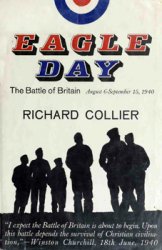The church was one of the most important, wealthy and influential institutions of medieval England. It permeated the whole of society, doing much to shape both its daily life and culture. Medieval life would have been unimaginable without it. Its principal role, the salvation of souls through teaching and the sacraments, gave it great authority and power; it was Christ’s representative on earth. As well as its religious role, it had important social functions as an agent of social control, setting and enforcing standards of behaviour through its pastoral work and courts. The church’s importance also derived from its economic status; it owned 25 per cent of the landed wealth of the kingdom. As a result, though it offered careers to the relatively humbly born, its interests usually lay with the landowning classes. The church was more than its clergy; it comprised all Christians, virtually the whole of medieval society. The laity were an important and influential component: they were donors, patrons, employers and taxpayers as well as worshippers. Much that went on in the church, including church-building and decoration, guilds, pilgrimages and prayers for the dead, reflected lay wishes and was a form of voluntary religion. Alongside this voluntary religion the church imposed compulsory forms, annual confession and communion, and the payment of tithes.
The medieval church has attracted much historical attention. Since the 1950s the steady flow of papers, monographs and editions of primary sources has become a raging torrent; a bibliography of the late medieval church alone compiled in 1989 lists nearly 1,000 works. Though these have vastly increased our knowledge, there has been a perhaps understandable reluctance to synthesize them into a coherent overview of the period 1100 to 1500, such surveys being mainly the work of nonspecialists. Overviews by specialist scholars have tended to concentrate on the beginning and end of the period, the Anglo-Norman and the late medieval church, leaving the thirteenth century in limbo. The Anglo-Norman church after 1100 has generated less controversy although there has been debate on the impact of the Conquest and the concept of a twelfth-century renaissance. The late medieval church has been the subject of much more heated debate. The history of the medieval church is still often read backwards from the Reformation, contrasting the vigour and reform of the twelfth century, which is seen as a period of development and progress, with the supposed stagnation and corruption of the fourteenth and fifteenth centuries that inevitably culminated in the reforms of the sixteenth century. Recent research has challenged this interpretation by considering the late medieval church on its own terms rather than as a prelude to the Reformation. Crudely stated, the new orthodoxy argues that the late medieval English church was in a healthy state by medieval standards, competently and conscientiously staffed, striving to maintain high standards, containing the threat of heresy and broadly satisfying the laity among whom anti-clericalism was rare. It had faults and weaknesses but they were not fatal. The causes of the Reformation must be sought from outside.




 World History
World History









